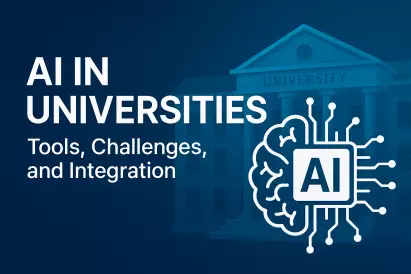Summary: Master’s education in Energy and Natural Resources in Central and Eastern Europe is rapidly evolving in response to regional transformations, energy security needs, and sustainability goals. This article explores key market drivers, curriculum trends, skills demand, and the future outlook toward 2028. It also examines regulatory frameworks, affordability, challenges, and competitive dynamics impacting this specialization.
Market Overview and Educational Context
The graduate education landscape for Energy and Natural Resources in Central and Eastern Europe (CEE) is entering a pivotal era. Driven by energy market transformations, geopolitical events, regulatory reform, and the pursuit of sustainability, this specialization is aligning closely with rapid changes shaping the region. Student interest continues to rise, especially regarding programs that integrate energy transition, digitalization, and green policy compliance. Universities in Poland, Hungary, Czechia, and the Baltics have become key hubs, attracting both domestic and international students seeking specialized knowledge in the energy sector.
There is an increasing focus on science, technology, engineering, and mathematics (STEM), alongside sustainability-related education. As demand grows, many students are now considering related fields such as Environmental and Sustainable Development or Energy and Natural Resources for their postgraduate paths.
Key Drivers Influencing the Sector
The transition from fossil fuels to renewables is central to Central and Eastern Europe's transformation. EU decarbonization targets (55% emission cuts by 2030 and full neutrality by 2050) have initiated considerable investments in green infrastructure. Moreover, the Russia-Ukraine war emphasized energy security and independence, catalyzing the diversification of energy sources including nuclear, hydrogen, and renewables.
EU policies like REPowerEU and Carbon Border Adjustment Mechanism reshape educational priorities towards energy law, policy analysis, and sustainability compliance. Simultaneously, digital competencies—such as AI integration and data science—are now imperative. Just as in Data Analytics programs in CEE, there is growing institutional integration of technological modules in energy courses, empowering students with future-ready skillsets.
Demand Trends and Curriculum Innovations
Master’s curricula across CEE are rapidly embracing interdisciplinarity, blending engineering, economics, policy, and climate science. High-demand topics for 2025 include digital energy (AI, sensors, smart grid), batteries and storage, nuclear power, geothermal, and hydrogen technologies. Courses are shifting toward modular, flexible, and experiential frameworks to address the evolving job market.
With growing emphasis on practical applications, internships and capstone projects tied directly to energy firms and government bodies are prevalent. Learners can also pursue micro-credentials or stackable degrees tailored to in-demand technology fields. This trend parallels patterns seen in Innovation and Project Management programs where real-world immersion is fundamental to learning outcomes.
Skills Development and Job Market Outlook
An evolving energy ecosystem requires a versatile set of competencies. Employers seek graduates capable of energy systems modeling, regulatory analysis, project management, and tech-specific expertise in digital grid systems and clean energy. AI literacy and digital fluency are increasingly vital in the sector.
These trends reinforce a parallel demand for leadership qualities and soft skills. Programs aligned with Leadership education paths are more likely to produce graduates capable of navigating complex transitions. Placement prospects are strong, especially across energy utilities, consulting, government, and climate policy institutions. Salaries remain regionally competitive and are climbing in high-demand roles.
Quality Assurance, Regulation, and Recognition
CEE Master’s programs conform to Bologna Process standards, facilitating transparency, credit mobility, and international recognition. Erasmus+ initiatives continue to expand cross-border study opportunities and reinforce integration into the European Higher Education Area. However, for non-EU students, visa hurdles and post-study work restrictions challenge enrollment growth.
Programs recognized under Europe-wide initiatives such as Energy and Natural Resources rankings benefit from improved visibility and credibility. This also promotes stronger collaboration between local institutions and global stakeholders in energy education.
Affordability, Accessibility, and Funding Sources
Affordability varies greatly across the CEE region. Public institutions often offer tuition-free or low-fee options, particularly to EU students. Conversely, private programs and routes for non-EU citizens carry higher costs. Funding from national governments, EU grants, and corporate sponsorships makes the ROI favorable amid growing employment prospects.
Certain disciplines, like Corporate Social Responsibility or green finance, channel ESG-aligned funds toward student support and innovation projects in sustainable energy. Professionals looking to upskill through part-time or hybrid learning also benefit from broadening micro-credential opportunities.
Challenges, Risks, and Strategic Outlook 2025–2028
Despite promising momentum, the region faces challenges: underfunded infrastructure in some universities, uneven faculty reskilling, slow adoption of digital pedagogies, and regional discrepancies in curriculum relevance. Programs must continue adapting to technology shifts and emerging competencies, such as carbon intelligence and hydrogen value chains.
By 2028, programs that embed interdisciplinary formats, active industry participation, and flexible credentials will outperform. Global collaboration and joint degree designs will expand, mirroring trends in sectors like Corporate Finance or E-Business and Marketing across Europe. The specialization remains a critical pillar in shaping Europe’s green and secure energy future.



